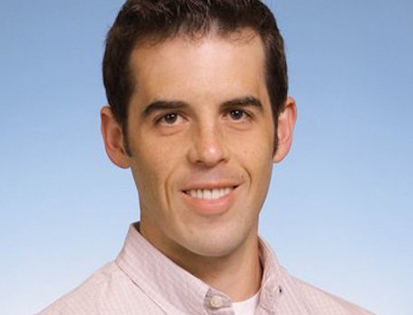Huge sequencing study links rare DNA changes to type 2 diabetes

Type 2 diabetes is a complicated disease influenced by genetics, lifestyle, and environment. Now, an international consortium of scientists has uncovered some previously unknown genetic factors — which could potentially aid the search for better treatments.
The researchers sequenced the exomes — all the protein-coding genes — of roughly 21,000 people with type 2 diabetes and 25,000 healthy controls. They found rare variants in four genes (SLC30A8, MC4R, PAM, and UBE2NL) that influence diabetes risk. These included 30 protective variants in the SLC30A8 gene.

“We now have an updated picture of the role of rare DNA variations in diabetes,” says Jason Flannick, PhD, a computational scientist specializing in genetics and the study’s first author. “They potentially provide a much more valuable resource for drug development than previously thought.”
These variants and genes could also help reveal more about the biology of type 2 diabetes, says Flannick, whose lab is based at Harvard Medical School, the Broad Institute, and the Division of Genetics and Genomics at Boston Children’s Hospital. The study was published last week in Nature.
Globalizing the search for genes
Apart from its massive size, a major strength of the study is its diverse cohort. Subjects included people of European, African American, Hispanic/Latino, East Asian, and South Asian background.
“These results demonstrate the importance of studying large samples of individuals from a wide range of ancestries,” said Michael Boehnke, PhD, the study’s senior author and director of the Center for Statistical Genetics at the University of Michigan School of Public Health. “Most large population studies focus on individuals of European ancestry, and that can make it hard to generalize the results globally. The more diverse the cohort makes for better, more informative science.”
Involving nearly 50,000 people, this may be the largest exome sequencing study of type 2 diabetes to date. But the researchers believe that with larger sample sizes, they could find additional rare variants, perhaps hundreds more. This could require sample sizes of 75,000 and 185,000 cases.
In the meantime, the team has made its results available for use by scientists around the world through the Type 2 Diabetes Knowledge Portal.
Other senior authors on the paper include Mark McCarthy, MD, of the University of Oxford, and Jose Florez, MD, PhD, of Massachusetts General Hospital, Harvard Medical School, and the Broad Institute. Funders include the NIH, the National Institute of Diabetes and Digestive and Kidney Diseases, the National Human Genome Research Institute, and the Carlos Slim Foundation.
Related Posts :
-

New research sheds light on the genetic roots of amblyopia
For decades, amblyopia has been considered a disorder primarily caused by abnormal visual experiences early in life. But new research ...
-

New genetic insights could change how we treat, and talk about, polycystic ovary syndrome
Polycystic ovary syndrome (PCOS) has long been viewed as a hormonal disorder affecting women of reproductive age. However, ongoing research ...
-

Thanks to Carter and his family, people are talking about spastic paraplegia
Nine-year-old Carter may be the most devoted — and popular — sports fan in his Connecticut town. “He loves all sports,” ...
-

Genetic causes of congenital diarrhea and enteropathy come into focus
Congenital diarrheas and enteropathies are rare and devastating for infants and children. Treatments have consisted mainly of fluid and nutritional ...





